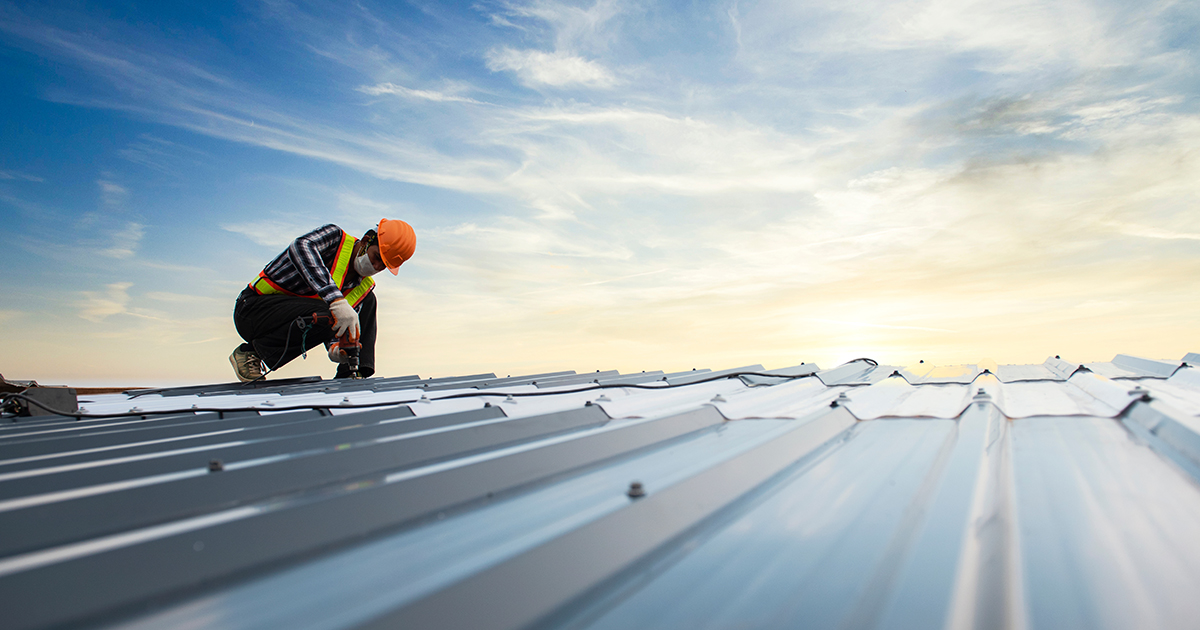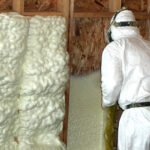
Commercial Roof Maintenance: 3 Ways to Maximize Your Roof’s Lifespan
You know better than anyone: managing a facility can sometimes feel like a high-stakes balancing act. Yet, amidst the array of responsibilities, maintaining your building’s roof stands out as more than just another item on your checklist—it’s a vital safeguard for your investment, a shield against unforeseen risks, and a cornerstone of your building’s longevity.
Let’s explore practical tips to prolong your roof’s life, safeguarding its protective role and minimizing future repair expenses.
#1) Regular roof inspections
First on our list? Conducting routine checks to identify potential issues like cracks, leaks, and damaged materials. Here’s why sticking to a regular inspection schedule is key, and what you should keep an eye out for to keep your building secure and efficient.
Why do regular roof inspections matter?
Let’s explore how these inspections offer proactive solutions for early detection, lifespan extension, safety assurance, and regulatory compliance.
- Early detection: Regular inspections spot signs like leaks or wear before they become major issues, saving repair costs and preventing damage.
- Extends roof lifespan: Promptly addressing issues prolongs the roof’s life, combating environmental wear and tear.
- Ensures safety: Inspections prevent accidents or health issues from roof damage, ensuring occupant safety.
- Compliance and documentation: Required for some industries, documented inspections aid in compliance, insurance claims, and resale.
How do I conduct effective roof inspections?
Now that we’ve got the “why” out of the way, let’s turn to the “how.” Below, find practice tips to make the most of your roof inspection.
Timing
Schedule inspections at least twice a year, ideally in the spring and fall. These seasons are ideal as they follow the extreme weather conditions of winter and summer. Additionally, conduct inspections following any severe weather events like storms or heavy snowfalls, which might cause immediate damage to the roof.
What to look for
During your twice yearly inspections, keep an eye out for the following.
- Structural issues: Check for sagging or uneven roof planes, ensuring structural integrity.
- Surface damage: Look for broken shingles or bald spots on asphalt.
- Leaks and water damage: Check for signs of water penetration, mold, or rot.
- Drainage: Ensure gutters are clear and functioning.
- Penetrations and sealants: Inspect seals for cracks or gaps.
Keep detailed documentation of findings, repairs, and completion dates, including photographs and notes on roof conditions. Not quite comfortable with conducting basic inspections? Consider hiring professional roofing contractors for thorough assessments, as they possess the expertise to identify hidden issues and offer comprehensive recommendations.
#2: Routine roof maintenance
Roof inspection complete? It probably revealed some areas that require maintenance. Like regular inspections, routine maintenance is a crucial aspect of facility management that extends the lifespan of your roof and ensures it continues to perform its protective functions effectively. Here’s a refresher on why routine maintenance is essential and how to do it.
What are the benefits of routine roof maintenance?
Regular maintenance plays a crucial role in prolonging the life of your roof and avoiding costly repairs. Here’s why:
- Prevents water damage: Keeping roofs and drainage systems clear prevents water accumulation, which can lead to leaks and structural damage.
- Reduces risk of rot and mold: Clearing debris helps prevent moisture retention, reducing the risk of mold growth and structural decay.
- Ensures longevity of materials: Regular maintenance preserves roofing materials, delaying the need for costly replacements.
- Maintains aesthetic appeal: A well-maintained roof enhances the building’s appearance and can positively impact customer perceptions.
- Avoids unexpected repairs: Routine maintenance allows for early problem detection and planned repairs, minimizing disruptions and expenses.
What are the key steps for effective roof maintenance?
Maintaining your roof’s integrity requires a systematic approach. Here are key steps to ensure effective roof maintenance:
- Clean debris: Regularly remove debris like leaves and twigs from the roof, especially after storms.
- Inspect and clean gutters and downspouts: Check for blockages and ensure proper water flow away from the building.
- Patch leaks: Identify and patch leaks promptly to prevent water damage.
- Replace damaged shingles: Replace damaged shingles to maintain the roof’s protective barrier.
Other things to keep in mind? Safety should always be the top priority when it comes to roofing repairs due to their inherent risks. Make sure to use appropriate safety gear like non-slip shoes, gloves, and safety harnesses. After completing any repair, it’s crucial to conduct regular checks, especially during rainy periods, to ensure that the leak has been effectively sealed.
For extensive damage or if you’re unsure about the repair process, consider seeking help from professional roofing contractors. They can assess the damage accurately and use high-quality materials and techniques for a durable and effective repair.
#3 Roof coating and restoration
Does your roof need some extra love? Professional roof coating and restoration services could be just what you need. These services aren’t just about slapping on some new paint; they’re about giving your roof a new lease on life, making it tougher against the elements and more efficient at doing its job. Here’s why you might want to consider them:
Silicone roof coating
Imagine a sunscreen for your roof. That’s what a roof coating does—it provides a protective layer that reflects sunlight and prevents excessive heat absorption. This means less wear and tear from UV rays and potentially lower air conditioning bills.
Roof restoration
This isn’t just about fixing problems; it’s about preventing them. Roof restoration can extend your roof’s lifespan by dealing with leaks, damage, and wear before they become major issues. It’s like a health check-up for your roof, keeping it in top shape and avoiding the need for a costly replacement.
Custom solutions
Every roof has its own quirks, whether it’s the material, age, or the local climate beating down on it. Opting for a professional service means getting a solution that’s tailored just right for your roof’s specific needs.
Ready to boost the performance and longevity of your facility’s roof? Consider exploring our roof coating and restoration services. We specialize in turning your roofing worries into a thing of the past, ensuring your roof is well-equipped to protect your building. It’s an investment in peace of mind and efficiency.
A final note on maximizing your commercial roof’s lifespan
As we wrap up our exploration on prolonging the life of your facility’s roof, remember that consistent maintenance isn’t just a task—it’s an investment in the safety, efficiency, and longevity of your building. By implementing regular inspections and routine maintenance, you ensure that minor issues don’t turn into major expenses, and your facility remains a safe environment for all its occupants.
For tailored solutions that fit your specific needs, explore our roof coating and restoration services. Our team is ready to help extend the life of your roof with state-of-the-art materials and dedicated expertise. Contact us today to discuss how we can protect your investment for years to come. Remember, taking action now can save you significant costs and hassles in the future. Your roof is the first line of defense for your facility—make sure it’s in top condition!

